In the sports and active nutrition corner of the dietary supplement industry, cutting-edge brands and consumer alike are constantly on the hunt for the "next stimulant". Something to safely take training and mood to the next level.
That next compound arrived in 2015 by way of N-Phenyldimethylamine or N,N-Dimethylphenethylamine, a constituent of Eria Jarensis Extract.
TL;DR
This is a new PEA-like molecule that has a very nice euphoric effect, and is most often used in pre workout supplements and a few notable fat burners. It's not as strong as DMAA in terms of strength, but may be the next best thing, especially given its compliance situation.
See the table of contents below, but we no longer list many products containing the ingredient on this page. The most popular raw material ingredient is NeuroPEA™ from SYNMR Biotechnology, who has an 80% strength extract for companies in geographies with no compliance issues.
Before we get into it and the products inside, let's take a stroll down memory lane to see why this is such a big deal and what we're up against.
How did we get here?
It all started with ephedrine / ephedra, which the FDA prohibited for use in dietary supplements in 2004,[1,2] which was finalized in 2006 after a long and brutal legal battle.[3]
NO-Xplode then ruled the streets for a while, but the industry was then completely disrupted when DMAA entered the scene. Reintroduced by Patrick Arnold and made famous in Jack3d and OxyELITE Pro, it was supposedly found in geranium stems[4,5], but never approved by the FDA for use in supplements.[6,7]
Once DMAA was banned, the game was on to find the next big thing. Things got serious, as new regulatory battles (and extremely questionable industry behavior) raged with higher and higher frequency.
The first thing after DMAA was Dendrobium extract, which was all the "craze"... until everyone found out that their favorite new pre workout was actually spiked with a methamphetamine analogue, and dendrobium contained none of the PEA-based compounds it was marketed to have.[8-11]
After that debacle, there was a bit of a layoff, and the industry took a collective sigh, attempting to recover from the negative press whirlwind that affected the entire industry.[12] Companies struggled to mix various ingredients and ever-higher doses of caffeine to get that extra edge... but it just wasn't the same.
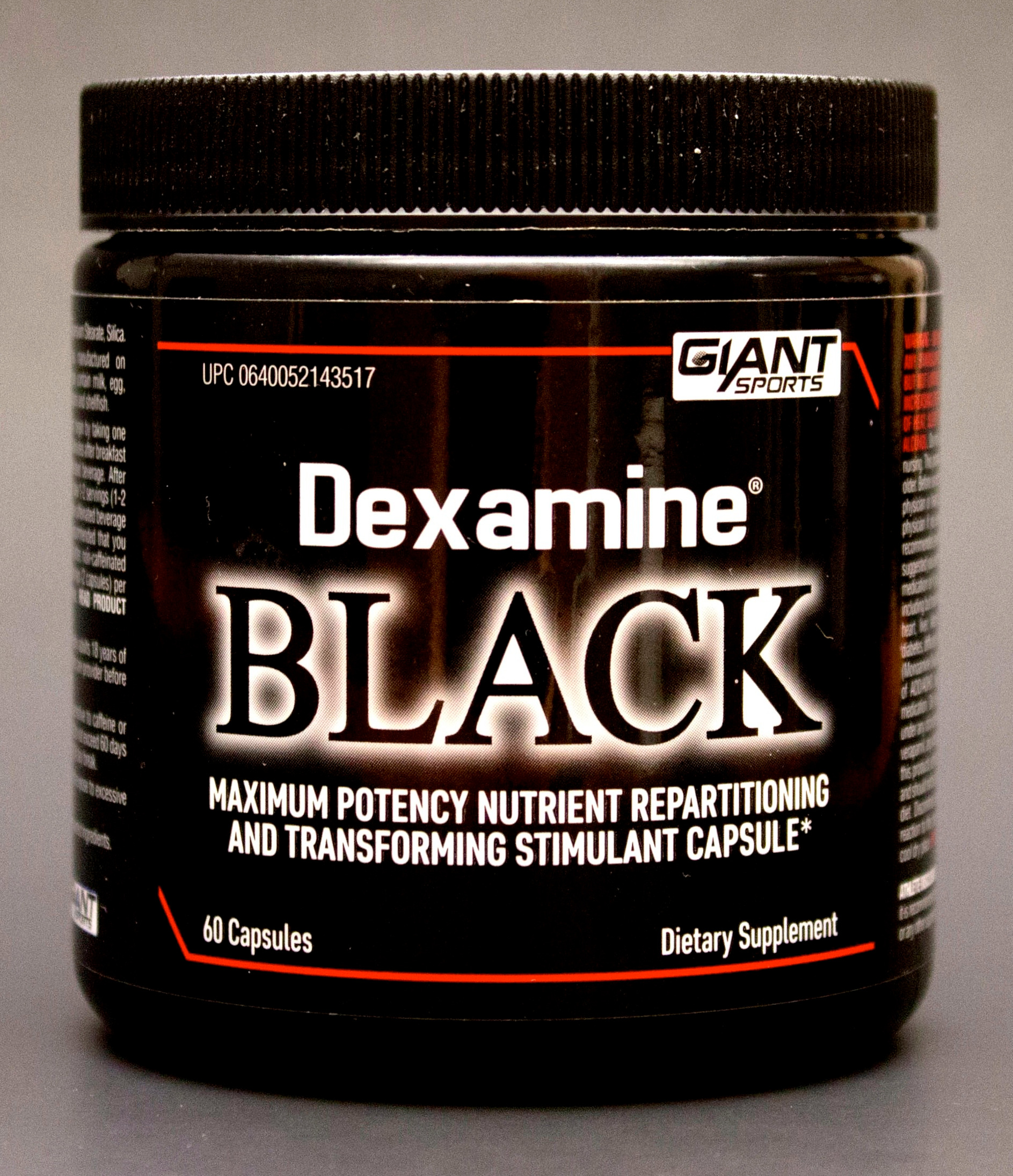
Now discontinued, this was the first supplement with this stimulant. It came with 250mg caffeine per capsule and an open formula.
Then, a flash in the pan: AMP Citrate, which was supposedly found in the vapors of pouchong tea,[13] provided a nice "DMAA Lite"-like edge. The FDA acted fast, recently putting the kibosh on that one too.[14]
Meanwhile throughout much of this time, an ingredient known as BMPEA has been on the market. It was labeled as a constituent of the much heralded acacia rigidula plant, but the FDA states that they cannot find it in acacia rigidula[15] (nor was it listed on many acacia-based product labels that actually contained it), so they sent warning letters about it,[16] which were fought, but the ingredient is now off the market.
With those off the market, it was back to the stimulant drawing board for the industry, and that's where we were - up until about two months ago.
That's when Giant Sports released the label of now-discontinued "Dexamine Black", and sent us a couple of early release bottles. Something was definitely different with this product. It wasn't insane, but we could feel that extra little "it" factor so many supplement users on the cutting edge consistently seek seek.
Could it be... the next big thing is here?
Introducing N-phenethyl dimethylamine, a constituent of Eria Jarensis Ames
On that product's label was an interesting new ingredient: N-phenethyldimethylamine, which seemed like yet another PEA-based ingredient.

N-Phenethyldimethylamine. If you're used to seeing these molecules but never know what it all means, then get ready - this article breaks it down and explain how it works
PEA, otherwise known as Phenethylamine, functions as a neuromodulator in the central nervous system. Although naturally-occurring, it's frequently supplemented for its therapeutic mood-boosting benefits (it boosts dopamine levels,[17] and dopamine is the "feel-good neurotransmitter").
PEA is incredible... for about all of five minutes.[18,19]
But at around five to ten minutes after ingestion, it will have been mostly metabolized by your MAO enzymes.[20,21] To get around this, some supplement manufacturers combine PEA ingredients with natural MAO inhibitors to get a longer-lasting effect. However, those ingredient combinations still weren't as potent as the now-banned ingredients discussed up above.
So the hunt was on for the Next Big Thing...
When trying the Dexamine Black (which also had 250mg of caffeine in one capsule), the "buzz" definitely lasted a lot longer. The best word to describe the feeling is one of euphoria.
It's not over the top, but it's a more uplifting feel than any fat burner we've tried since the original OxyELITE Pro.
It's similarly different than anything with PEA - and we'll explain why below - so it's got us thinking... if this is potentially FDA compliant, is N-phenethyldimethylamine (or possibly any supplement with an Eria Jarensis Ames extract) what the industry was been looking for?
Since there's no published research that's been performed specifically on this molecule, we have to dig into the underlying chemistry in the section below. Our basic conclusion is that it's not as powerful as DMAA, but it seems more legal and was the best new thing in 2015 and early 2016.
We briefly talked about PEA up above, and how this seems similar... but PEA just doesn't last long enough.
So how is N-phenethyldimethylamine any different here?
What follows is a bit of a chemistry lesson about how this class of stimulants work, in a not-too-scientific manner.
How N-phenethyldimethylamine might work
We asked Bruce Kneller, then-formulator at Giant Sports Products and creator of Dexamine Black, about what made his new ingredient so special. He dropped us some hints:
First, take a look at the most basic 2D models of some popular stimulants, alongside this new one:
DMAA:

The DMAA 2D Molecular Structure
Amphetamine:

The 2D Structure of Amphetamine
And even PEA:
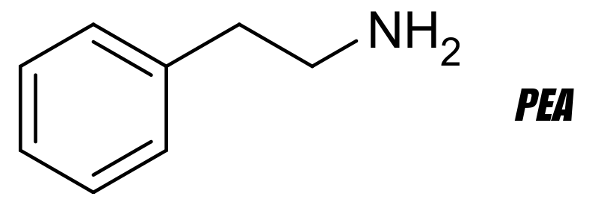
The 2D Structure of PEA / Phenethylamine
Now, let's look at N-phenethyldimethylamine:

The N-Phenethyldimethylamine 2D Structure - notice anything similar yet?
Note that these 2D models don't tell the whole story behind these molecules, but they help tell our story.
See anything similar between them all?
If not, here you go, in red:
DMAA:

DMAA 2D Structure with the PEA Backbone Highlighted
PEA:
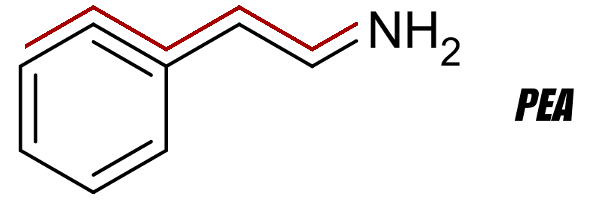
PEA 2D Structure Receptor with the PEA Backbone Highlighted
N-phenethyldimethylamine:

N-phenethyldimethylamine 2D Structure with the PEA Backbone Highlighted in red
Those red lines are what we call the "PEA Backbone", and they show where the compounds bind to receptors in your brain. They do this by mimicking some of your brain's own neurotransmitters. Once those brain receptors are activated, they release more dopamine, and in comes your feel-good rush.
That's the "easy" part.
Passing the feasibility test
The hard part comes in finding an ingredient that passes all tests:
-
We need a non-toxic compound that won't get metabolized as quickly as PEA;
-
It needs to be legal and FDA/GRAS compliant (discussed in further detail later on);
-
And it can't last too long, otherwise it will cause all sorts of long-term problems with the dopaminergic system (an extreme example being amphetamine psychosis[22]) which would surely get it banned (or more likely for use in prescription drugs....)
So first, let's worry about part (1) above: protection from metabolism. But before we talk about that, we need to discuss what exactly we're trying to protect!
Protecting the Amine
A key part of the dopamine-boosting reaction in your brain is the nitrogen atom, labeled as N in the pictures above. That N is known as the amine - it's a basic nitrogen atom that has a "lone pair" of valence electrons that aren't shared with another atom.[23]
Those spare electrons enable your body to do an uncountable number of wonderful things, as they create bonds / reactions and interact with several other biological molecules and receptors. For instance, our neurotransmitters epinephrine, norepinephrine, dopamine, and serotonin are all amines - amines that we sometimes want more of.
Mimicking our natural boosters - but safely
A stimulant-lover's goal is to safely and temporarily mimic the natural action of those neurotransmitters so that the brain can release enough dopamine to power through a workout, a tough test, or a long night on the job.
The four compounds pictured above all do just that - mimic your neurotransmitters and cause a dopamine surge (amongst other things). But some simply work better and last longer than others.
Why? It comes down to the other atoms connected to the molecule. Nitrogen needs a bodyguard, otherwise it suffers the same quick fate as PEA from your MAO enzymes.
Now let's further illustrate two of the images above:
DMAA:

The DMAA 2D Structure with alpha alkyl section highlighted. This helps prevent its degradation, making DMAA bind to the dopamine receptor longer.
N-phenethyldimethylamine:

N-Phenethyldimethylamine is like a PEA molecule, but with an N,N' Alkyl section that also prevents MAO from cleaving it... although not as well as DMAA's mechanism.
Compared to the support (or lack thereof) in poor PEA:
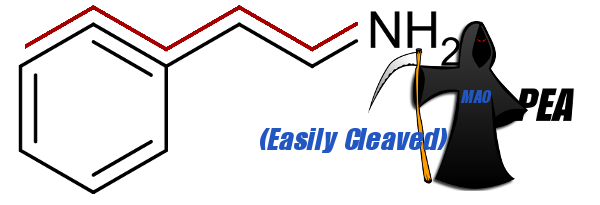
The PEA molecule offers practically no physical protection for the amine (N), so MAO has no problem "cleaving" it into less relevant components
So in DMAA and N-phenethyldimethylamine, you have some form of protection that doesn't make it so simple for MAO enzymes to attach and "cleave" them off of your dopamine receptors.
In the case of DMAA, it is an alpha alkyl - it "works incredibly well" - giving DMAA the ability to last throughout your workout (just one reason why it was so popular).
N-phenethyldimethylamine has an N,N' dialkyl, which is not as good as DMAA's alpha-alkyl, but still does offer some protection.
The honest truth is that many in the industry are looking for the next DMAA - but it needs to be legal / DSHEA compliant, and perhaps just a little bit weaker (since any stronger is likely to find you in ban-land).
This may be the molecule that gets the job done - at least for 2015 and early 2016 - although it's definitely not as powerful as DMAA:
DMAA is an aliphatic amine
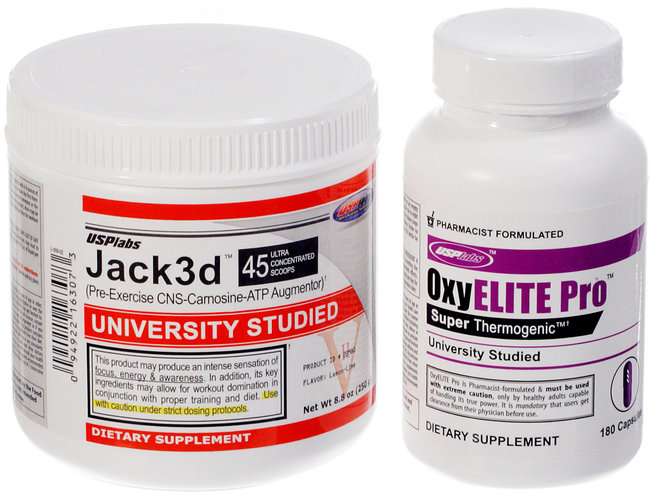
Rest in peace, dear friends. You were unstoppable when used responsibly.
The issue with PEA molecules like N-phenethyldimethylamine is that while they do indeed feel good, they can only do half of what molecules like DMAA do.
DMAA and AMP Citrate are both in a class of molecules known as aliphatic amines - these are amines that do not have an aromatic ring attached to the nitrogen atom.[24] In the compounds above, the hexagons (with the straight lines inside the hexagons) on the left of PEA and N-phenethyldimethylamine molecules represent aromatic rings.
Aliphatic amines like DMAA offer more "basicity", which means that (and we're way oversimplifying things here) because of the way the nitrogen is charged, the molecules are overall less complex, so their nitrogen atoms are more likely to donate their free electrons.[25] In general, this allows for a broader diversity of reactions to occur with aliphatic amines.
The end result is that the proper aliphatic amine (such as DMAA) not only provides the dopamine surge, but you end up with other results such as improved athletic capabilities.
N-phenethyldimethylamine vs. DMAA: Great, but not as great
So, to put it simply, N-phenethyl dimethylamine is NOT as strong as DMAA. It should almost definitely provide that euphoric buzz and will certainly last longer than PEA, but it probably won't help you outswim a team of Navy SEALs like DMAA sometimes could. Sorry to bring the bad news.
But, at this stage in the game, we're happy to have it here - so long as it remains legal - and love the extra step of mental mojo that it (and any supplement containing it) provides.
It's also worth mentioning that now is not the time to try finding aliphatic amines to use as a pre workout. Many of them are chemicals such as solvents that will drop you dead in no time at all. There's a very small subset that are actually moderately safe for consumption.
Added Benefit: Lipophilicity
Beyond what's discussed above, N-phenethyl dimethylamine has some other nice benefits. Those added CH3 parts are known as alkyl groups, and they generally help increase the lipophilicity - or ability to dissolve in fats - of PEA molecules.
What does that mean to us? The simple answer is that it will cross the blood-brain barrier much more easily.
So having something with the structure of PEA, but with the added protective lipophilic structure of the alkyl groups gives you something that's better than PEA - exactly what many users want.
Things obviously go a lot deeper here, especially when you start dealing with the prescription drugs they're giving kids these days, and that's really out of the scope of this article. It gets to the point where it is no longer about chemistry and starts to become a lesson in physical space and biology - and this is where those drugs really starts to impact the system (often negatively - sorry kids).
So there's a fine line here with these compounds - too strong and you're on your way to the psych ward or addiction clinic, but too weak and there's no point in bothering with it in the first place.
Point being, there is a very fine line to balance here. And for our purposes, N-phenethyldimethylamine seems to walk that line quite well.
Eria Jarensis Ames: Where does this come into the picture?
So getting back to the original ingredient that you may have come here searching for, what is eria jarensis ames?
It's a plant in the orchid family - eria is the genus, eria jarensis is the species. And it is the only plant (that we know of) that has been shown to supply N-phenethyl dimethylamine.
The published science is a bit limited at this point: it's only mentioned very briefly in a fifty year old document titled Phenethylamines from Eria jarensis Ames: Studies on Orchidaceae alkaloids.[26,27]
In that document, it discusses that
"eria jarensis ames [collected in the Philippines by Miss Mary Fermin] has been shown to contain simple phenethylamine derivatives.
The base fraction consisted of N-methyl-phenethylamine and N,N-dimethylphenethylamine (II). The mixture was treated with ketene and then analyzed by combined gas chromatography-mass spectrometry. The retention time of N,N-dimethyl-phenethylamine and of the acetyl derivative of N-methyl-phenethylamine, as well as their mass spectra, were indistinguishable from those of authentic samples...
10 kg of the fresh plant material afforded 1g of iodide, 50mg of N-methyl-phenethylamine and 5mg of N,N-dimethyl-phenethylamine. Choline (0.3g) was also obtained."[26]
The issue is that if those numbers are accurate, it would take a lot of plant matter to get these compounds. It's been a long time since their discovery up above, and both our ability to extract them and our ability to measure them have improved.
On legality and the FDA - Will this get banned? (We don't think!)
Note: This section was updated on August 2, 2017.
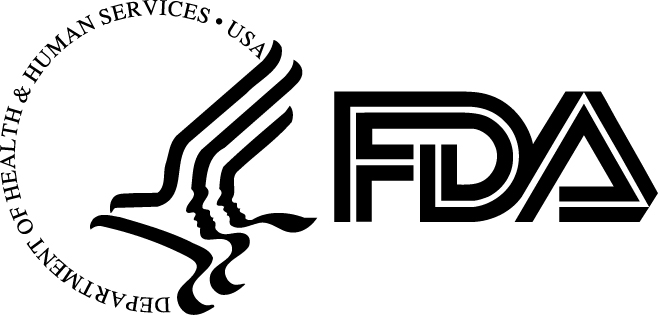
The FDA will have a tough time stopping this one, given the documents we've found.
Earlier in this article, we said that we want a component that's strong but not too strong, and FDA compliant. What does that mean?
- It can't be a scheduled drug (obviously),
- It must have been used or marketed as a supplement prior to October 15, 1994, or be present in the food supply as an article used in food[28], OR
- It is a vitamin; mineral; herb or other botanical; amino acid; a dietary substance for use by man to supplement the diet by increasing the total dietary intake (e.g. enzymes or tissues from organs or glands); or a concentrate, metabolite, constituent, or extract (or combination of the above)[28], OR
- Some company must file an NDI (New Dietary Ingredient) and show that it is reasonably expected to be safe[29], which is an expensive and painful process with no guarantees, OR
- It has GRAS Status (is Generally Recognized as Safe) as a food additive.
While it's great that this compound is found in nature, our concern is that the FDA is going to want more assurances regarding this ingredient than just one fifty year old document.
It turns out that it's the final bullet point listed above -- GRAS Status, where N-phenethyl Dimethylamine (aka N,N-Dimethylphenethylamine) achieves its best chances with the FDA.
GRAS Status Due to Use as a Flavoring!
The FDA maintains a database known as EAFUS, which stands for "Everything Added to Food in the United States". This database contains a "list of substances contains ingredients added directly to food that FDA has either approved as food additives or listed or affirmed as GRAS."[30]
Within EAFUS, you can see "N,N-DIMETHYLPHENETHYLAMINE" listed on both their entire alphabetical list[31] and its own EAFUS page as Doc No. 3645, CAS RN / 2449-49-2.[32] Unfortunately, there's not much more public info from the FDA, but the FDA does list it as "FEMA GRAS Publication No(s): 22",[32] so we get into the GRAS publication below. This seems to bode quite well for anyone using it in a supplement, so long as it's labeled properly.
WHO and Other Organizations: More Documents Supporting Flavoring
The World Health Organization (WHO) maintains a document named "Evaluation of Certain Food Additives" that discusses safety statuses of such compounds.[33] You can see the relevant page below:
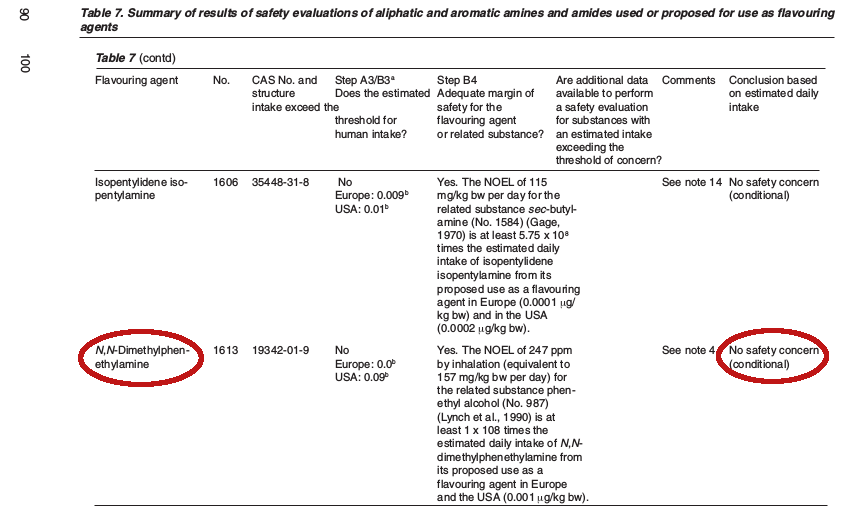
The World Health Organization (WHO) lists N,N-Dimethylphenethylamine as a safe food/flavoring additive (Summary of results of safety evaluations of aliphatic and aromatic amines and amides used or proposed for use as flavouring agent)
Of course, the World Health Organization does not supersede FDA law in the US, but this is more quality evidence supporting the EAFUS / GRAS listing.
WHO Claim: Found in shrimp!
Extended versions of that same WHO source also state that
"N,N-Dimethyl-phenethylamine (No. 1613) has been measured in shrimp."[35]
We've never seen peer-reviewed research on that, and they don't cite studies, but shellfish seem to come up frequently with these types of amines.
Flavoring Use
Finally, the 22nd publication of a book titled "GRAS Flavoring Substances"[34] made by a group known as The Flavor and Extract Manufacturers Association (the other FEMA) has N,N-Dimethylphenethylamine described as a generally recognized as safe flavoring ingredient, and discusses its strengths and weaknesses when used in that capacity.
This source leads us to believe that the EAFUS listing is for true GRAS status, but that's still not 100% confirmed on the FDA's website.
Summary on FDA situation
Given that the compound itself (and not "eria jarensis" or "shellfish" or anything else) is listed in Summary Table 7 shown above, and because the compound is listed in the FDA's EAFUS database, establishing it as either an approved food additives or listed / affirmed as GRAS, it's possible that we don't need a plant extract for this one.
That said, having it available as an extract in both eria jarensis and shrimp is a major bonus, and this is why we believe this ingredient will be enjoyed for a longer period of time than many of the others that have suffered the fate of the FDA.
Dosage
There is no recommended dose for N-phenethyl dimethylamine, but we find that it's probably best to stick with what Giant Sports started with: a maximum 125mg twice per day.
One interesting thing noted early on is that all of the products containing this ingredient have some strong doses of other ingredients. For instance, Dexamine Black kicked things off right away with 250mg caffeine per capsule!
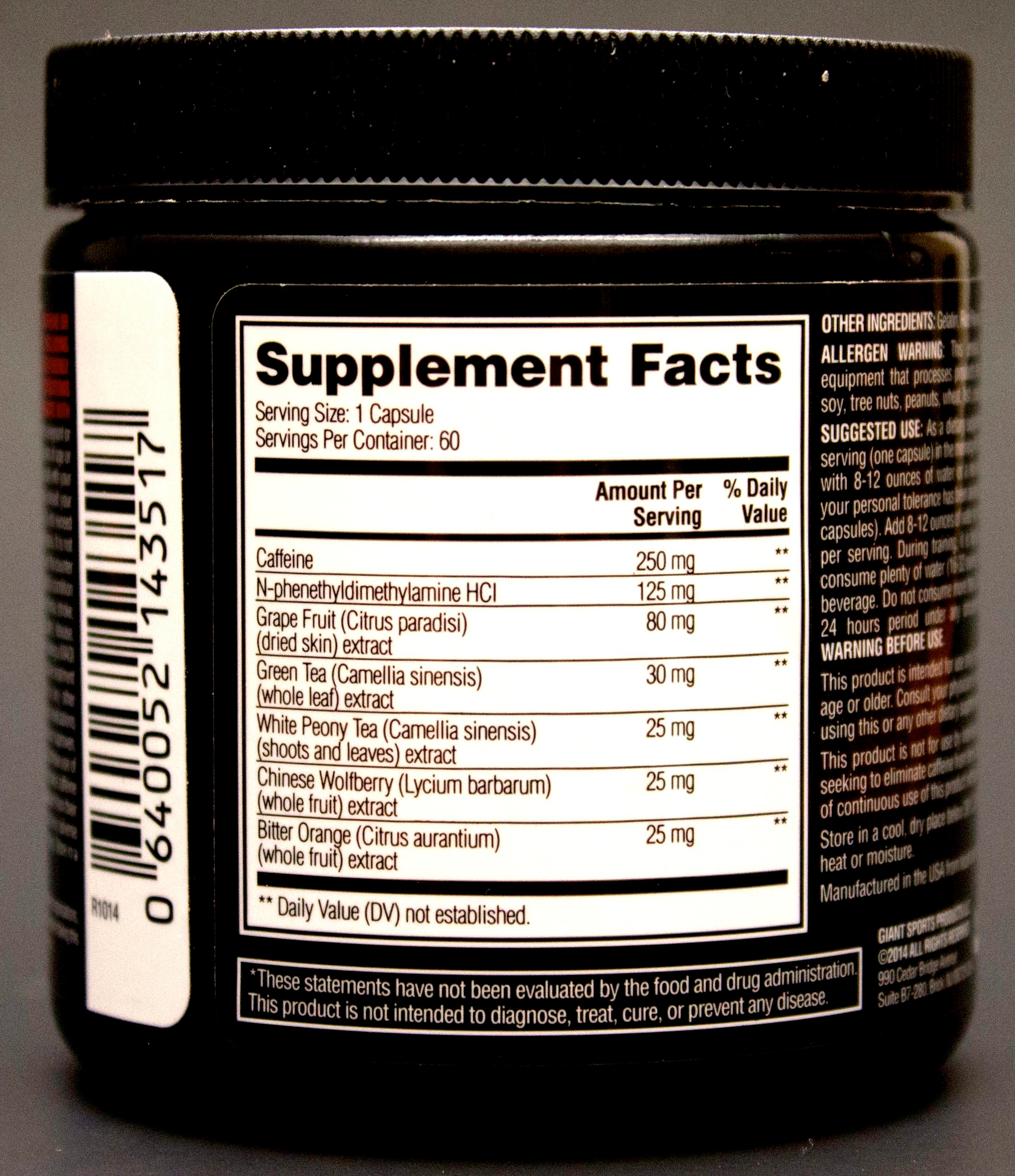
The Dexamine Black Label is the only one with an open formula, and 125mg taken twice per day so far has done well. Your mileage may vary (especially with that caffeine dose!)
One unconfirmed idea is that this is a way of "rate-limiting" a consumer's use of this ingredient, so that there are fewer issues. In the case of Dexamine Black, nobody would want to take more than two capsules at a time - the caffeine dose alone would be outside of recommended safety limits for an entire day.[36] That's just postulation though.
Regardless, it seems that a max of 250mg per day, spaced out between two 125mg doses, is the best current strategy.
Judging from our research above, this seems like a safe number when compared to the maximum of 500mg of regular PEA per day - since N-Phenyldimethylamine is stronger and longer-lasting, we will want less than a PEA dose.
Side effects?
Looking at PEA's potential side effects, extreme cases have noted rapid heartbeat and high blood pressure, but it gets broken down so soon that it's difficult to really measure these impacts, and is tough to find actual research backing those statements up (please leave a comment if you've read any research or case studies).
PEA-based compounds also sometimes yield a bit of a crash, but anecdotally, we haven't had this yet with N-Phenyldimethylamine.
Do NOT mix with prescription drugs
The biggest issue with PEA supplements is not the PEA itself, but when mixed with other drugs or supplements that act as MAO inhibitors.
Some MAO inhibitors are natural and relatively weak, others (especially those in prescription form) are extremely strong and should not be taken alongside any kind of PEA-like molecule. Ever.
This is why you must always speak to a doctor and get written consent before beginning any new diet or supplementation program - especially with a new supplement such as this. After that, always follow the label.
Real talk
Fact is, if you're here reading this in mid-2015, there's not a ton of information one way or another. That's why we wrote this article, but without published research, there is some risk to taking any new compound. You are entering slightly uncharted territory. Some consumers are fine with that, others are not - use personal discretion to determine your risk threshold.
But in our case here, the science leans towards this being weaker than DMAA, and that likely means less side effects as well. That may help shape your decision as to whether or not you want to try it. If you do, start with a minimum dose first, but only after consulting your doctor.
This page is highly theoretical and is not intended to cure, treat, or diagnose any illness. Absolutely no statements on this page have been approved by the FDA, so speak with your doctor before any new diet or supplement program.
Supplements with N-Phenethyldimethylamine / “Eria Jarensis Extract”
This article is no longer up to date with new products. The best bet is to find products containing NeuroPEA, shown below.
What about getting raw N-Phenethyldimethylamine / “Eria Jarensis Extract”?

Sponsor: Brands looking for the best N-Phenethyldimethylamine Raw Materials? Then it's SYNMR's NeuroPEA! Click the image or read more below
If you're a brand looking for raw material, then we've learned a few things over the years. It turns out that the best form of this ingredient is actually N-Phenethyl Dimethylamine Citrate, which is odorless and has a long shelf life comapared to the competing N,N-HCl version.
A most responsive supplier of N-Phenethyl Dimethylamine is SYNMR, who has an ingredient named NeuroPEA. In 2019, they provided us with the following HPLC test to prove their purity, as they claim to have the most pure "N,N-PEA Citrate" on the market, but this may be slightly different than the 80% NeuroPEA we see now:
You can contact them on the SYNMR website - they are highly responsive to inquiries and have pure product ready to go in America.
Note that SYNMR also sells several other trusted ingredients, both on the stimulant side and the "general health" side of the market.
HNMR and MS Tests Provided as well as the COA
On top of the HPLC test above, SYNMR has also provided an HNMR test for us:
The COA is what you'd get when the order arrives, but it's really all about the lab tests.
Contact SYNMR with further questions.
Summary
To wrap things up, we don't think we've found the "next DMAA" in terms of potency, but we've got something decent, new, and seemingly compliant on our hands.
Since first writing this in 2015, a couple waves of products have come out with the ingredient. Experience has now told us that it's typically most enjoyable when combined with other stimulants such as DMHA, although Performax Labs has something to say about that, given how well HyperMax Extreme feels with N-phenethyl dimethylamine as the main ingredient.
When all is said and done, even if DMHA and DMAA were to be declared illegal, we believe that N-phenethyldimethylamine will still be standing, so this is a great ingredient to keep an eye on.
All posts mentioning Eria Jarensis / N-phenethyl dimethylamine on this blog
This list will stay up to date with the latests posts (typically product analyses) mentioning this ingredient:




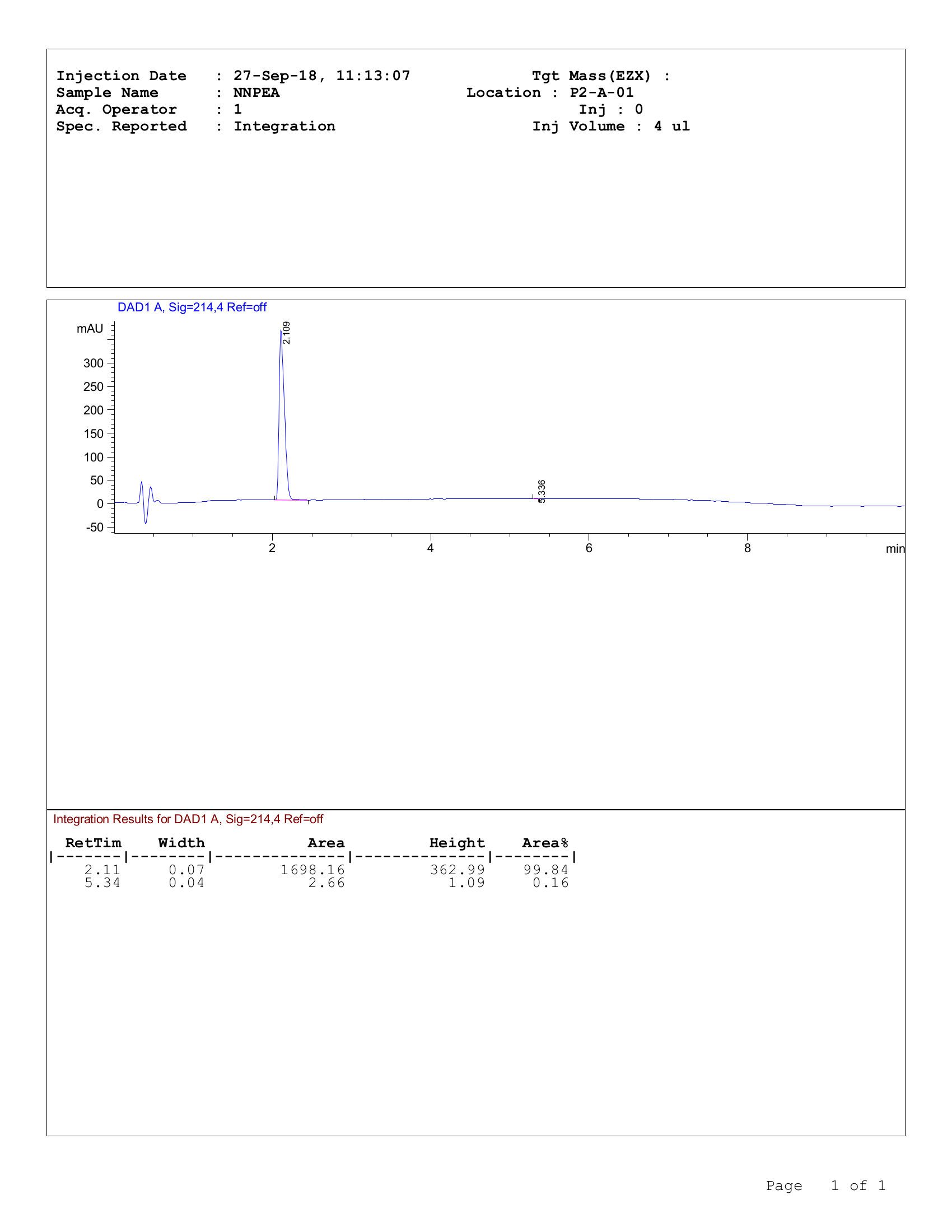
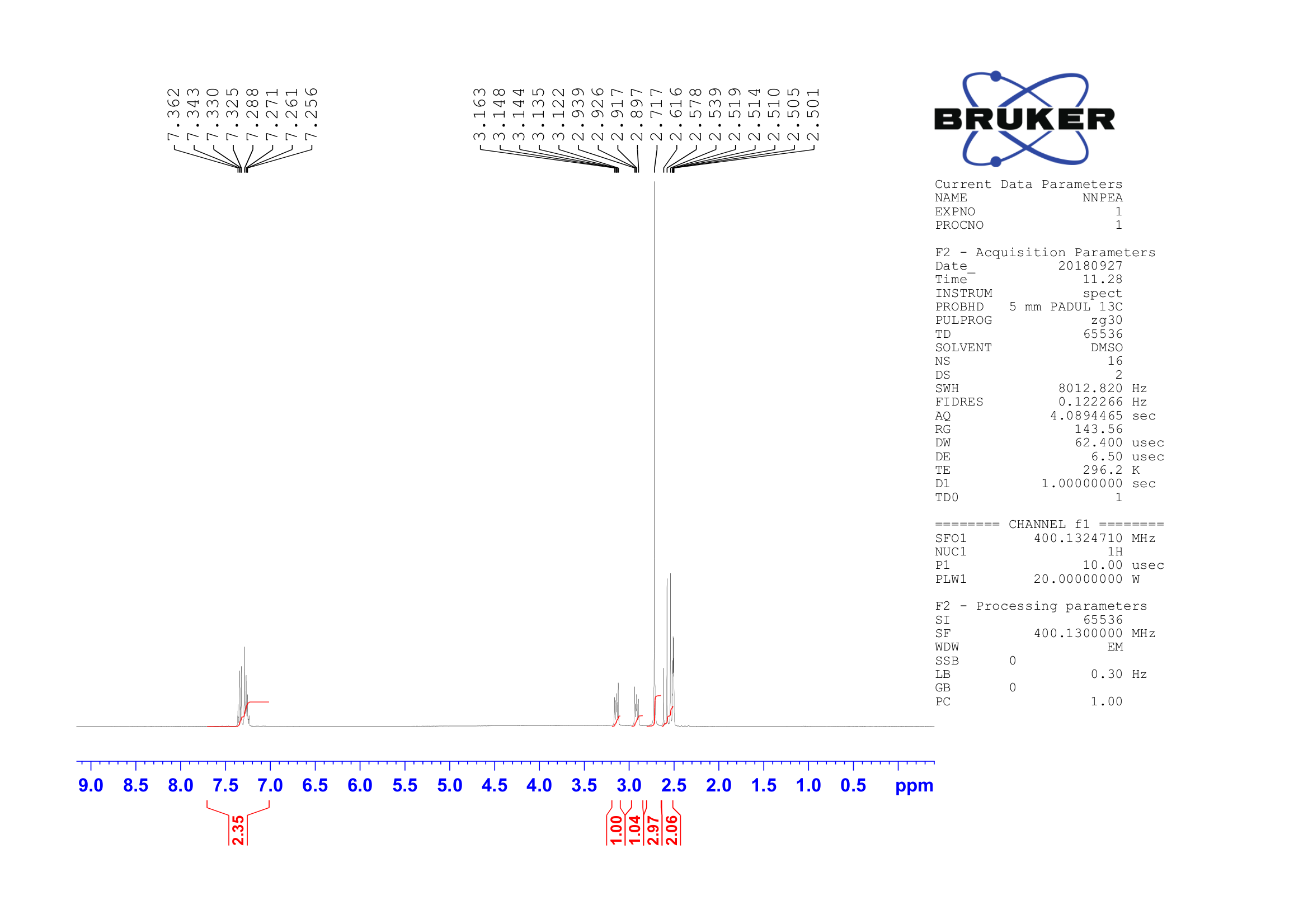
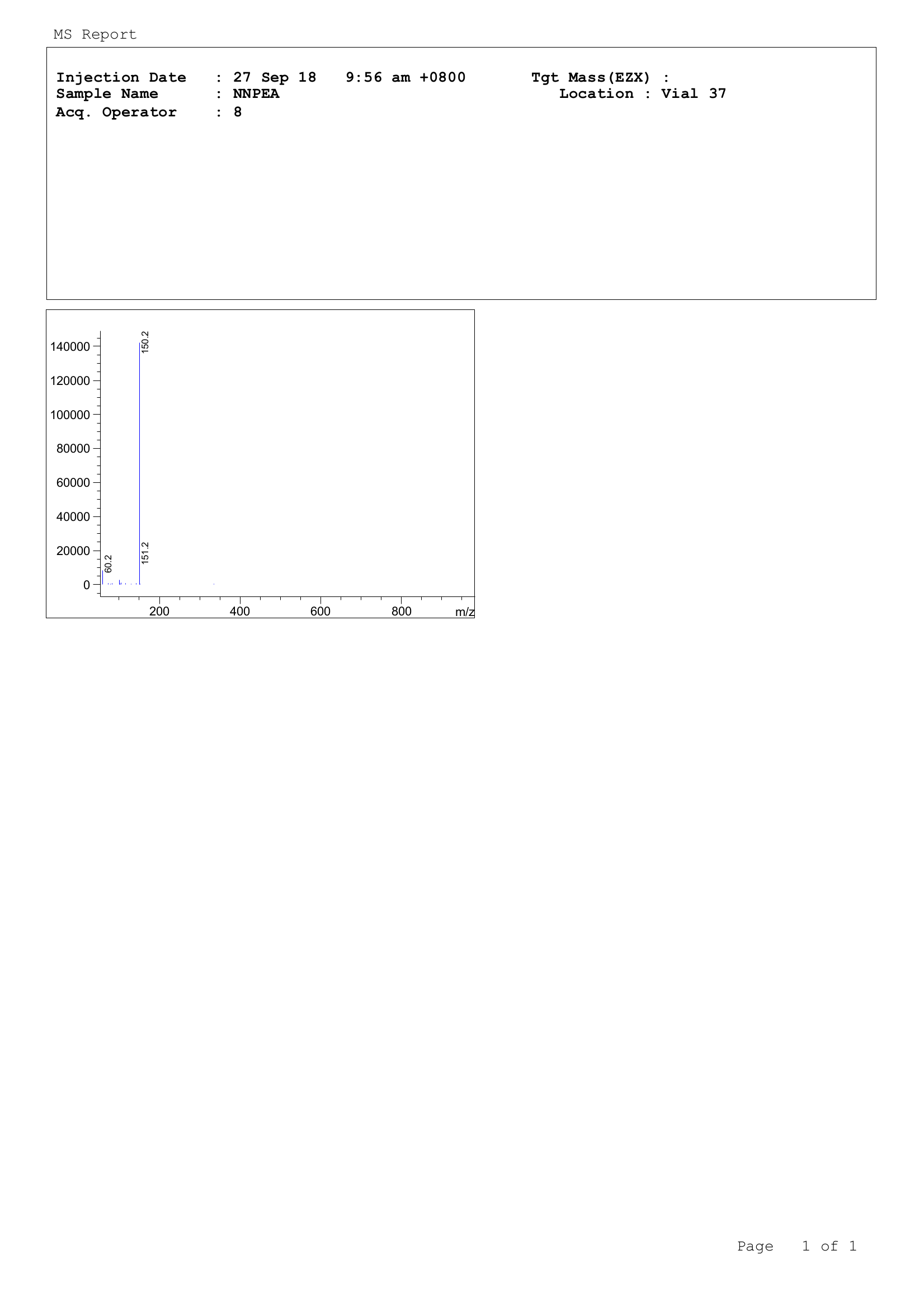
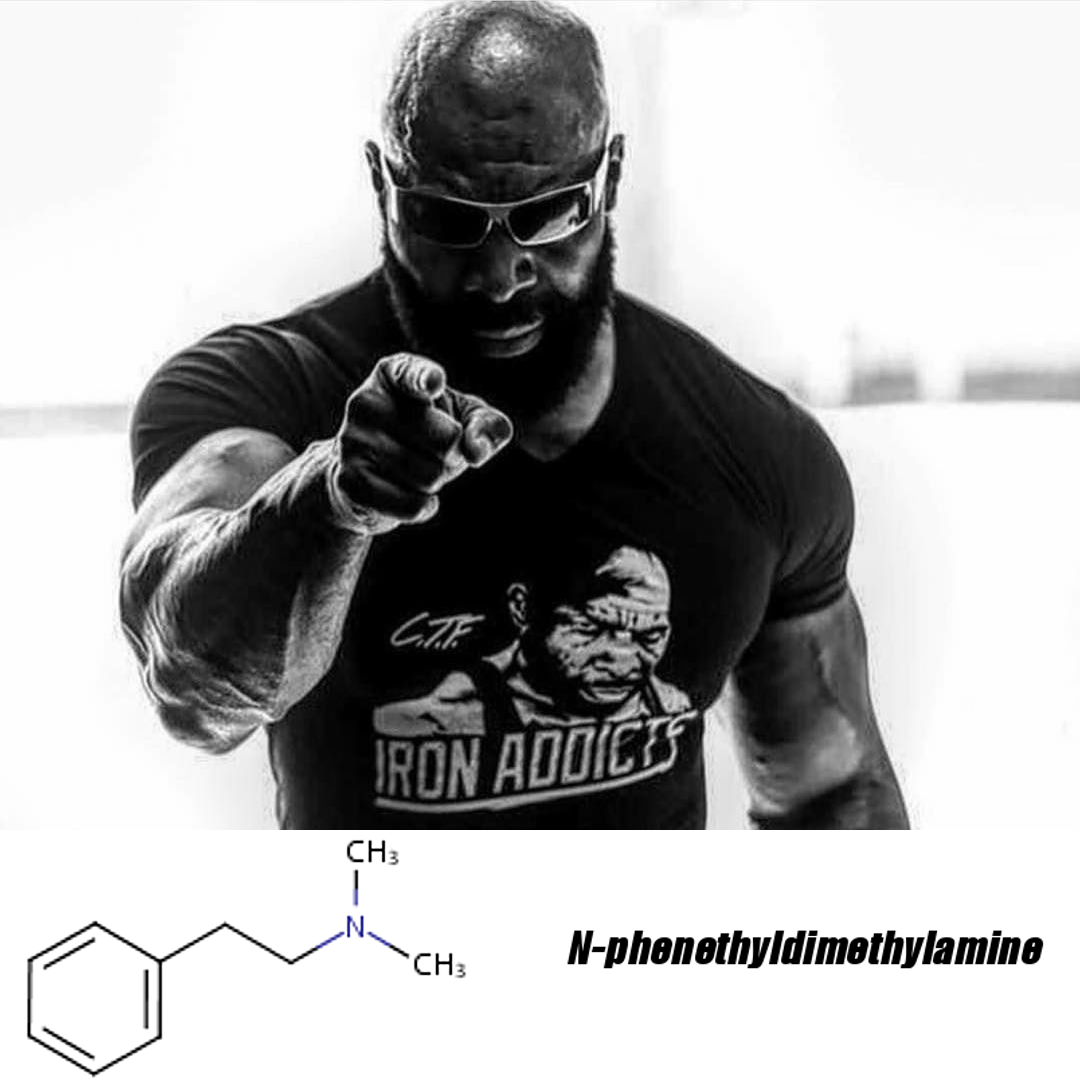


Comments and Discussion (Powered by the PricePlow Forum)